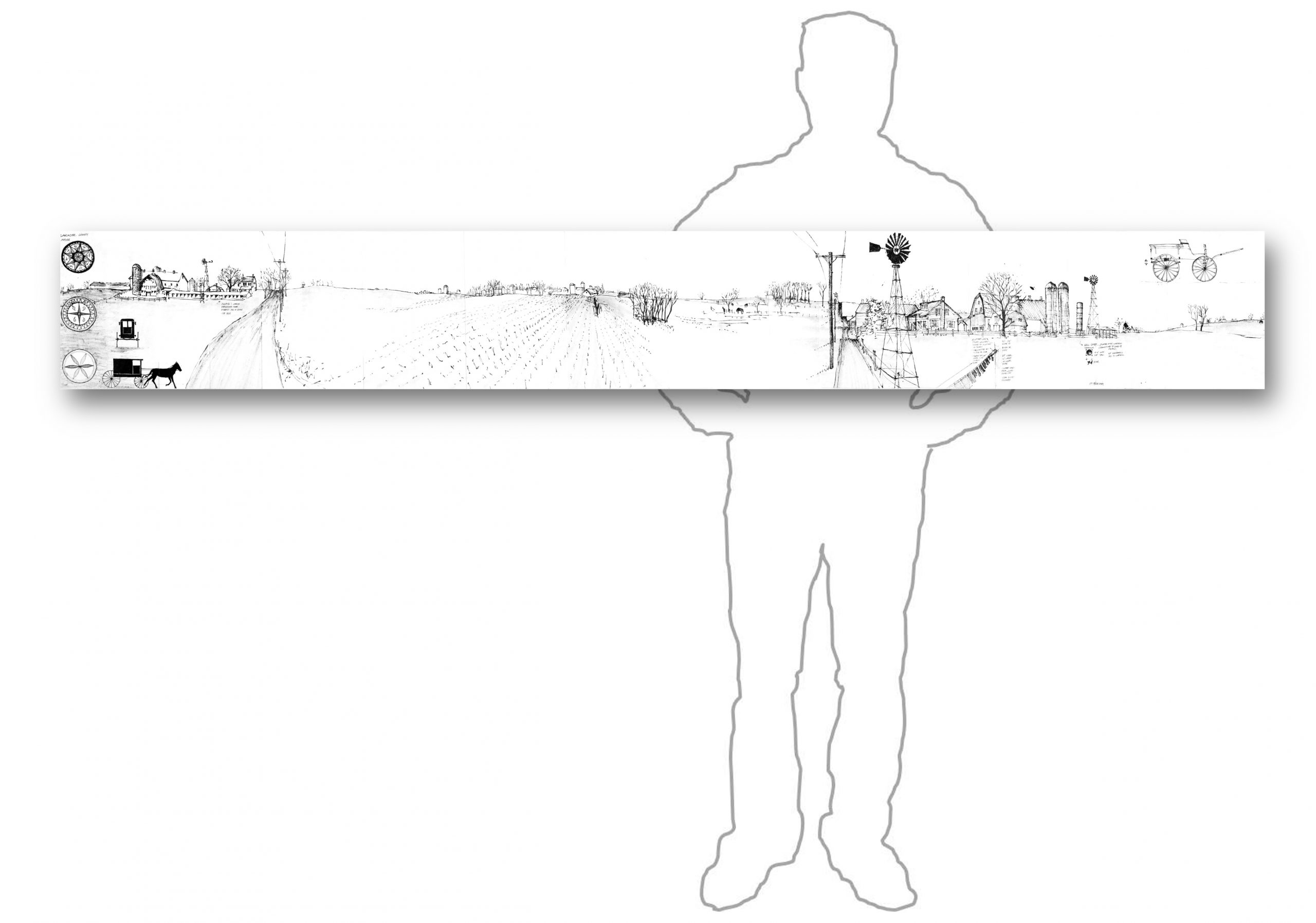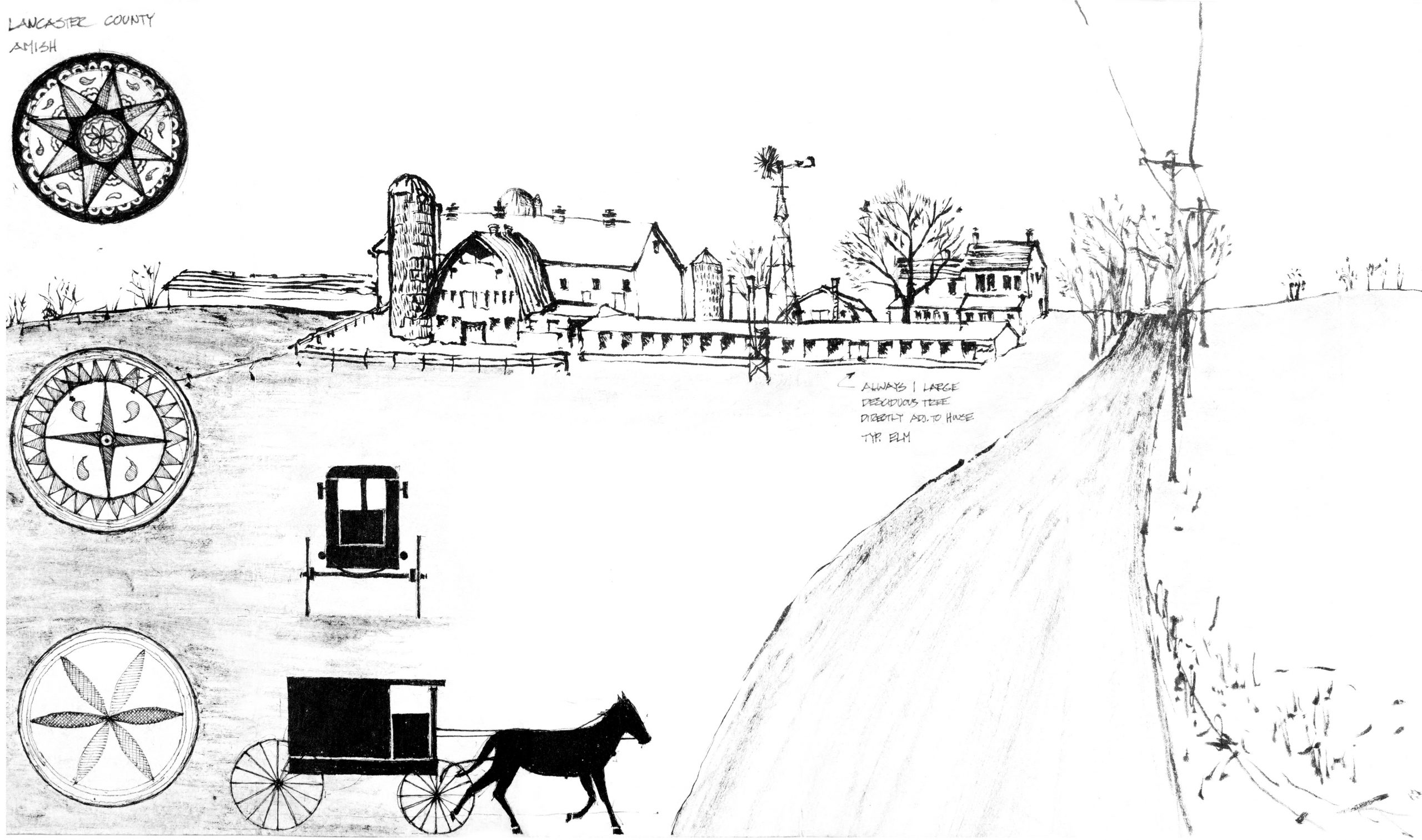7.13.USA-4-detail-a southern overhang Highlights Relevant to Sustainable Design:
We can save energy with the sun without having to install solar panels.
This sketch includes a shadow study at six different times a day. We can optimize the energy efficiency of homes and buildings by understanding when and how the sun is an asset over a liability. Watching these shadows over multiple times of day and later over multiple seasons and looking at shadows in different regions helped me better understand what people around the world have understood for thousands of years. The seasonal change in the angle of the sun is dramatic and can be used to our advantage with proper building placement and overhang design. As well, the sun’s angles change relative to the latitude of the planet, so a house outside of Boston should not look like a house outside of Atlanta. Plus, breakfast rooms should have access to morning eastern light if possible.
If you live in the middle latitudes in America, such as the swatch from the mid-Atlantic states across to upper Central California, you will notice at a Fourth of July picnic that the sun is almost directly overhead. In the summer at around noon, it is almost ninety degrees off of the horizon. By contrast, on New Year’s Day at noon, the same sun will be much lower in the sky, closer to twenty-five degrees off of the horizon. This six-month delta is due to the fact that the earth’s axis of rotation is not perpendicular to the orbit path around the sun. We can use this to our advantage. For our family’s solar home outside of Philadelphia, I oriented the solar portion of the addition to the south, but I also calculated that we needed just over twenty inches of southern overhang to help shade the high summer sun from overheating the house while still allowing the desirable winter sun to shine in and help heat the stone floor. Each latitude on the planet dictates a different overhang distance.
Author and illustrator: Charlie Szoradi is an architect, inventor, and the CEO of Independence LED Lighting. He writes about many other topics related to southern overhang and passive solar design through his extensive travels around the world.
If you have found this posting online, it is an excerpt from Mr. Szoradi’s book Learn from Looking that served as the inspiring seed content for this drawing share resource. For additional drawings and insights on southern overhang and energy efficiency, we hope that you enjoy exploring LearnfromLooking.com. You can search via general terms such as sustainability as well as narrower terms such as southern overhang and passive solar.
Southern overhang design was one of the many energy-efficiency measures incorporated into the “Sustainable Smart House” described in detail in Chapter 11 of the Learn from Looking book.



